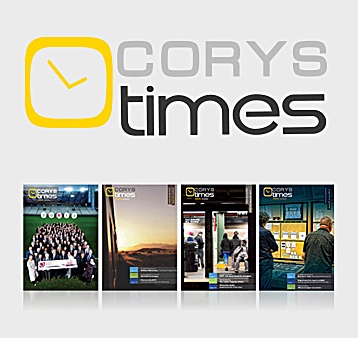After three years’ work, CORYS is close to completing verification and validation (V&V) of the implementation of safety I&C on PLCs for Hinkley Point’s EPR reactor. Framatome is the client for this mission, which combines manual tasks and automated tests.
In a few weeks’ time, CORYS will have completed V&V for the implementation of the first version of the safety I&C for Hinkley Point C (HPC). Two figures suffice to give an idea of the scope of this job: the most recent version of the documentation ran to over 60,000 pages; I&C will be implemented on some 50 PLCs.
A CORYS team of between five and fourteen
We’re not done yet, because the specifications are subject to change right up until reactor start-up. Simply changing a PCB or cable can have an impact on I&C, but we do now have the first version that can be rolled out on site.”
: explains CORYS project team engineer Sylvain Turmo
CORYS started work in 2021 with a team of five people; by 2023, this number had grown to fourteen. These experts in nuclear power and Instrumentation & Control have devoted their energies to a task that is very strictly defined by NNB, for instance in terms of document review and test scopes, but also very open-ended in terms of the definition of tests and their implementation.
Gaining expertise throughout the project
Sylvain Turmo says:
“We naturally needed to carry out testing on the future PLCs for HPC. We also used Framatome tools alongside an HPC engineering simulator designed by our teams.”
By contrast, some other verification tasks were fully manual in nature. They included checking that documents several hundred pages long were properly numbered and had no pages missing. The only way to do that was to be painstakingly methodical; it is hoped that automated tools will eventually be able to complete the task faster.
The CORYS team has already noted two takeaways from this project. Firstly, it has capitalised knowledge about its own practices, gaining a better understanding of customer needs, the vital need to be both methodical and stringent in implementing V&V procedures, ensuring proper appropriation of I&C, and providing fully relevant answers.
“For example, when we run into a problem, we’re now quickly able to identify whether the issue is one of coding or design.”
This increasing expertise is so evident that some members of the team have actually joined Framatome or will do so in the coming months.
The target: V&V for EPR2 I&C
Another lesson learned is that the tools used, in particular the engineering simulator, are highly effective not only for reporting and analysing errors but also as a source of inspiration for tests.
Sylvain Turmo gives an example:
“To test the way control rod assemblies are managed, I start by observing their movements, using the simulator to identify the priority aspects to be verified”.
Already on the minds of the project’s stakeholders is the next job, V&V of I&C for the EPR2, for which more use will be made of automated tools – in particular SimFD, which allows I&C diagrams to be entered and then executed to check compliance.
“This will result in time savings of some 10-20% over the total lifespan of the project”
thinks Sylvain Turmo
CORYS will be changing the look and feel to ensure that SimFD is as easy to use as the Visio CAD tool used by Framatome for HPC safety I&C, whilst at the same time providing the consistency of a model, which facilitates the transition to simulation.





